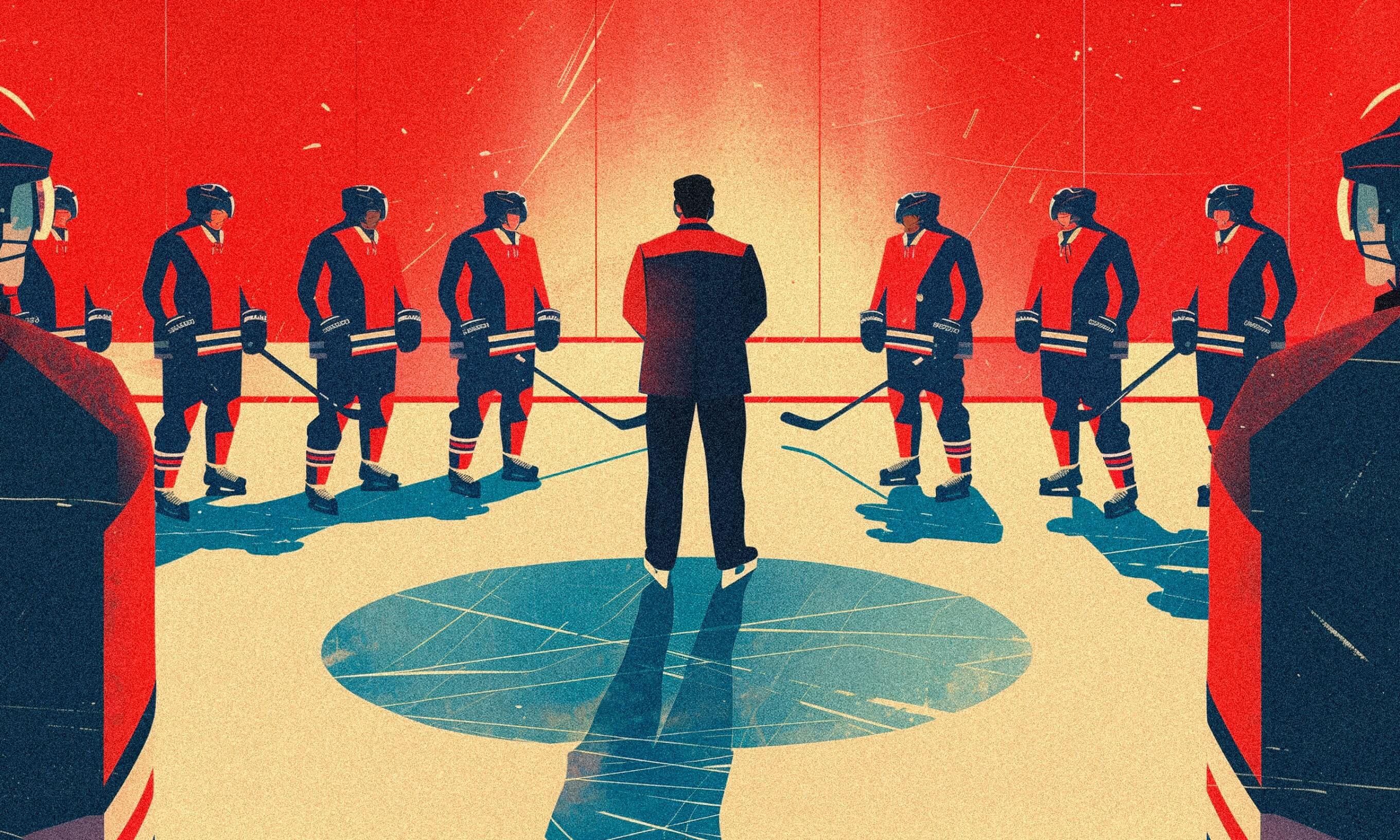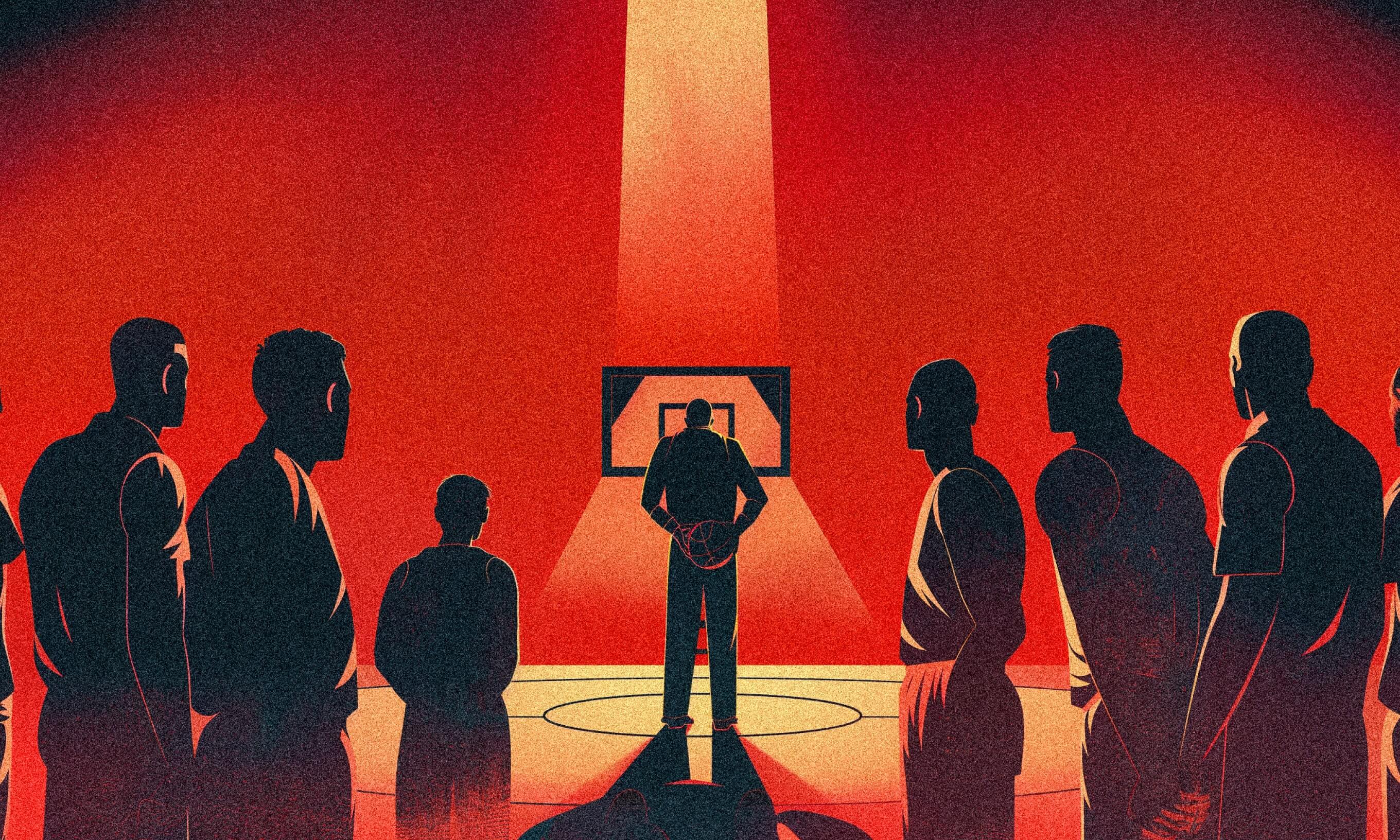Best-selling sportswriter Rich Cohen invokes legendary coaches to examine what it takes to build a winning franchise for the era.
Anyone who has ever worked in an office knows that a business should be a kind of team – less a hierarchy than collective, with everyone working for the same goal, which, if it’s a good place to work, will be about more than money.
In the case of a software company, it might look like a product or an app but really be a vision, a new way of looking at the world. The leader, founder, or boss will be akin to a coach in such a setup, which is why, if you want to build a great team, you can do worse than look to the great pro coaches for inspiration. The methods and tricks they used to build teams will be remembered for as long as the games are played.
Phil Jackson, the ‘let them play’ coach
Jackson had been a decent pro and a good minor league coach before he took the top job with the Chicago Bulls in 1990. Also: he was a hippie, a Deadhead, and a believer in Eastern wisdom. Jackson replaced Doug Collins, who’d not been able to get the team, with the future Hall of Famers Michael Jordan and Scottie Pippen, past the Pistons.
The Bulls were talented but young when Jackson assumed command, and it was this youth, lack of experience, and inability to control the emotional flow – the Pistons would goad the Bulls into dumb fouls – that Jackson sought to address. How’d he do it? Mostly by letting the players play.
In the past, when the team got in trouble, Collins would call time out, talk it over, and send in a play. Jackson let them carry on instead, knowing they’d learn to play through the trouble by necessity. The result, which included six titles in eight seasons, was one of the savviest teams in league history, the roster made of independent-minded athletes who believed, no matter how tight the trap, they’d always be able to figure their way out.
Lesson: Let them struggle. The road to victory is paved with failures.
Scotty Bowman, the rhythm coach

Bowman had already coached his way to six Stanley Cup Championships when he took over the Detroit Red Wings in 1993. Pro hockey was changing in the early 1990s. The Soviet Union had fallen, releasing a flood of Russian talent, players who’d reinvented the game as members of the Red Army team.
Slava Fetisov, the first of the new class, struggled with the New Jersey Devils in 1989-90, which did not dissuade Bowman from trading for the great Russian winger. Bowman knew Fetisov was not the problem in New Jersey. It was his linemates. The Russian was playing at a different level. His teammates could not keep up. A player operating at a different speed, too slow or too fast, is an unfixable problem. A hockey line is like a rowing crew – the parts have to function in unison, in rhythm. Too fast gums up the works the same as too slow.
And so Bowman went shopping for players who could skate with Fetisov. By 1995, he had five veterans of the Red Army team in Detroit. Operating as a single unit – the resulting dominance was beautiful – they led Detroit to Stanley Cup championships in 1997 and 1998.
Lesson: To win, you need players who can play together.
Chuck Daly, the depth coach
Daly coached the Detroit Pistons from 1983 – 1992, in which time he turned a team that had hardly ever been decent, let alone good, into one of the NBA’s most feared dynasties. These were the Bad Boys of Isiah Thomas, Bill Laimbeer, Dennis Rodman, John Salley, Joe Dumars, and Vinnie Johnson. The team won championships in 1989 and 1990, and, had it not been for a BS call in game six of the finals, would have won in 1988, too.
To overcome some of the greatest teams in basketball history – Larry Bird’s Celtics, Magic Johnson’s Lakers, Michael Jordan’s Bulls – Daly had to come up with a strategy that depended on some other than talent. Depth was the answer. Most top clubs had six genuine NBA players. Daly assembled nine.
Though none were as great as Jordan or Johnson or Bird, the sum was greater. In Detroit, the second team was arguably better than the first, which made the team a very tough problem to solve. Whenever the starters on a team like the Celtics went out to rest, the Pistons bench ran up the score, forcing the Celtics stars, getting older every day, to return before they were ready. The result was a war of attrition the Pistons had been built to win.
Lesson: Depth beats talent nearly every time.
Mike Ditka, the chemo coach
It had been a generation since the Chicago Bears won a title when Iron Mike, who’d been a Hall of Fame tight end for the Bears, returned from exile in Dallas to carry his old team back to glory. But the Bears suffered from something more dire than bad players or strategy when the coach arrived.
According to Doug Plank, a hard-hitting safety who was on the team when Ditka took over, the Bear teams of the late 1970s suffered from football cancer. “And what is cancer?” said Plank. “It’s guys who don’t hustle, don’t try, don’t care.”
There are, according to Plank, three kinds of coaches: the aspirin coach, who talks a big game but fixes nothing; the penicillin coach, who can cure anything but cancer; and the gut reno type, down-to-brass-tacks chemo coach. Like Ditka.
At his first team meeting, Ditka said he had good news and bad news for the players. We’re going to the Super Bowl, but most of you won’t be here when we do. Iron Mike spent the first weeks of practice just watching, then cut half the roster. Some of the team’s most talented players were released, but, of course, talent had nothing to do with it.
Lesson: Cut till you reach healthy tissue, then build from there.
Pat Riley, the shape-shifter
Riley had been a gritty hard-nosed player who supplied the muscle and menace to the Laker teams of Jerry West and Elgin Baylor. But when he took over as coach in 1979, he did not try to make them in the image of his own championship teams.
He took account of the team’s finesse and speed – James Worthy, Magic Johnson, Byron Scott, no NBA team has ever been faster on the wing – and made trades and designed plays with that talent in mind. Hence Showtime, the Lakers team that won five championships between 1982 and 1989.
But when Riley left L.A. for New York in 1991, rather than try to replicate that success, he built a new team around the Knicks’ existing talent, the result being a team that resembled the Bad Boy Pistons.
When he left New York for Miami in 1995 – he currently serves as the Miami Heat franchise’s president and head of basketball operations – he built yet another kind of team, like making a cake with whatever happened to be in the cupboard. The three teams had only one thing in common: they all won.
Lesson: Build with what you have, not with what you wish you had.
So, what’s a software company to do?
If you run a software engineering firm, all of this naturally begs the question of what kind of leader is best for this type of company. It’s tempting to draw comparisons between Steve Jobs and Phil Jackson (proponents of mindfulness and independent thinking), or Jeff Bezos and Chuck Daly (depth of talent leads to winning wars of attrition), or Meg Whitman and Pat Riley (building off an existing talent base toward massive success).
But dig a little deeper and it becomes harder to make such simple comparisons. In sports, certain things are fixed. The field is always the same dimensions. Rules change slowly, if ever. And most fans die hard. They’ll show up for a losing season, middling season, or championship run – just because they bleed team colors. (They have the rec rooms in their basements to prove it.)
In software, the field is constantly in flux. New markets come out of nowhere. Technology makes things possible today that didn’t exist yesterday. Capital comes in waves and goes away in the same way. And consumers, for the most part, are nothing like fans. Fail them, lose once, and they are gone. Off to your competitor in the blink of an eye.
And so, when it comes to managing a software company, there’s a “Breakfast Club” dynamic at play. Somedays, you want to be a Ditka, making the tough calls when your team is resting on their laurels and lacking the will to improve. Or you’ll want to be Bowman, hiring the right design team to get all of your rowers working the same direction.
Other times, when the war for top talent is blazing hot, you may need your second lines to outperform your foes’ secondary tier, and build the right teams to execute for this. When you need to innovate, you’ll channel Jackson, letting your teams decentralize and fail fast on their own, developing their own style and outputs. Like Riley, you may need to work with who’s on the bench after an acquisition spree when the team composition is totally new.
You’ll be the athlete, brain, weirdo, rebel, and financially secure leader at different times. How you put these pieces together in your own way will define your long-term success.
Rich Cohen is a New York Times-bestselling author whose most recent book is “When the Game Was War: the NBAs Greatest Season.” His other sports titles include “Pee Wees: Confessions of a Hockey Parent,” “The Chicago Cubs: Story of a Curse,” and “Monsters: The 1985 Chicago Bears and the Wild Heart of Football.” He is an Editor at Large at Air Mail and a columnist at the Wall Street Journal. Cohen has written for Rolling Stone, The New Yorker, The Atlantic, and Harper’s Magazine, among other publications.











